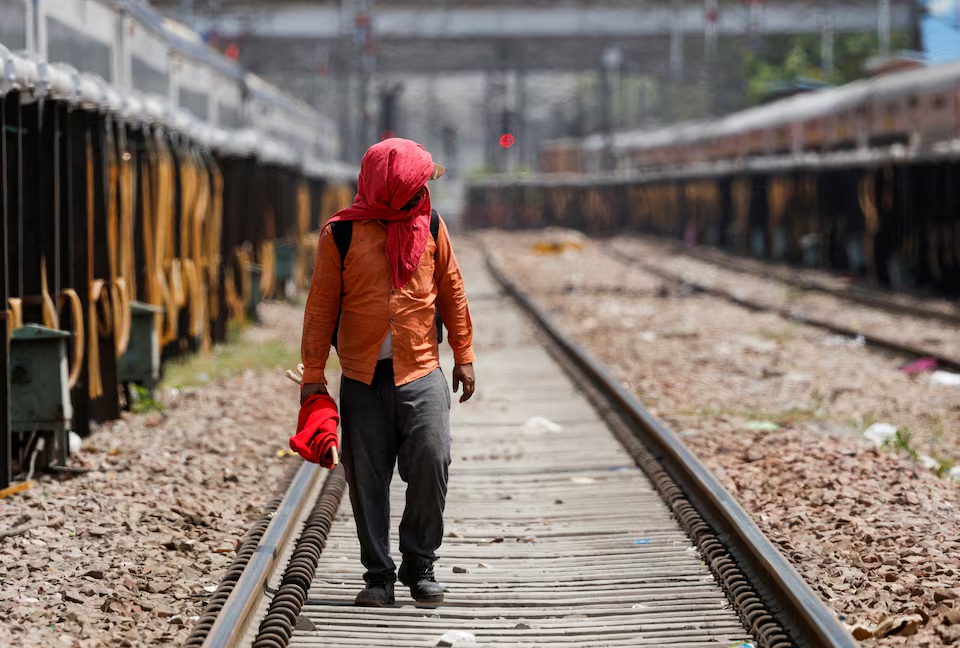A groundbreaking new study released on Tuesday, May 20, 2025, reveals that over 80% of Indian districts are now highly vulnerable to extreme heatwaves, posing serious threats to public health, food security, and economic productivity. The findings highlight the urgent need for nationwide heat action plans and climate adaptation policies as India braces for another scorching summer.
Published by the Indian Institute of Public Health (IIPH) and backed by the Council on Energy, Environment and Water (CEEW), the report assesses heatwave exposure, sensitivity, and adaptive capacity across more than 700 districts. The results show that 90 out of the top 100 vulnerable districts are located in low-income states, including Uttar Pradesh, Bihar, Chhattisgarh, and Odisha.
“Heatwaves are no longer a weather anomaly — they are a public health emergency,” said Dr. Arvind Krishnan, lead author of the study. “India must act swiftly to integrate heat preparedness into its development strategy.”
Rising Temperatures, Rising Risks
India has seen a steady rise in maximum temperatures and heatwave days over the past two decades, worsened by urbanization, deforestation, and climate change. In 2024 alone, the country recorded over 300 heat-related deaths, though experts believe the real number is significantly higher due to underreporting.
The report notes that:
- Severe heatwaves are now occurring earlier in the season and lasting longer.
- Districts with poor infrastructure, healthcare, and green cover are particularly at risk.
- Over 600 million people live in areas classified as “extremely vulnerable” to heat stress.
Public Health and Economic Implications
Heatwaves have already led to a sharp uptick in heatstroke cases, hospital admissions, and reduced labor productivity in sectors such as agriculture and construction. The study estimates that India could lose up to 4.5% of its GDP annually by 2030 if no adaptation measures are taken.
“Daily wage workers, the elderly, and children are the most at risk,” warned Dr. Manju Reddy, a public health expert with CEEW. “Hospitals are overwhelmed during peak heat periods, and rural clinics often lack even basic cooling systems.”
The report urges state governments to adopt localized Heat Action Plans (HAPs), improve early warning systems, and invest in cooling infrastructure, such as shaded public spaces, water distribution points, and climate-resilient housing.
Urban Heat and Planning Gaps
Urban centers are not spared. Cities like Delhi, Ahmedabad, and Nagpur are experiencing the urban heat island effect, where densely built environments trap heat, pushing temperatures well above surrounding rural areas.
Only a handful of cities have formalized HAPs, and implementation remains patchy. Experts are calling for mandatory heat audits in infrastructure planning and cool roofing policies in building codes to lower indoor temperatures.
Climate Inequity in Focus
The study underscores that heat vulnerability correlates strongly with poverty and governance gaps. Districts in northern and eastern India — already grappling with unemployment, migration, and limited healthcare — face the highest compound risks.
“Without targeted support, climate change will deepen existing inequalities,” said Arjun Gopal, a researcher with the Indian Climate Observatory. “Vulnerable populations will be hit the hardest, again and again.”
Recommendations
To address the rising heat crisis, the report calls for:
- A national-level heat resilience mission with dedicated funding.
- Mandatory Heat Action Plans for all high-risk districts.
- Integration of cooling and climate resilience in housing, education, and urban policy.
- Enhanced climate data transparency and inter-agency coordination.
As India prepares for yet another brutal summer, the report’s message is clear: the climate clock is ticking, and heatwaves are not just weather events — they are fast becoming the defining challenge of survival in a warming India.
Source; Reuters



